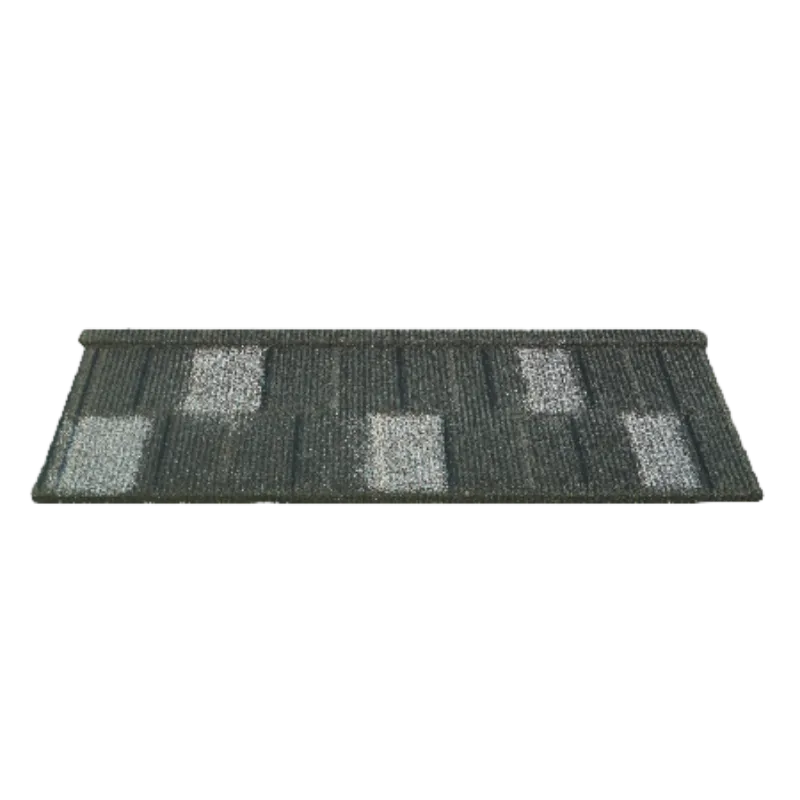
Oct . 16, 2024 22:28 Back to list
Comparing Architectural Shingles and Standard Shingles for Your Roofing Needs
The Difference Between Architectural Shingles and Regular Shingles
When it comes to roofing materials, homeowners often find themselves navigating a sea of options. Among the most popular choices are shingles, specifically architectural shingles and regular shingles. Understanding the differences between these two types can help you make an informed decision for your roofing project.
1. Definition and Composition
Regular shingles, also known as three-tab shingles, are the traditional form of roofing used in residential construction. They consist of a flat, uniform shape with a three-tab design that creates the appearance of individual shingles when installed. Usually made from asphalt, these shingles are lightweight, easy to install, and cost-effective.
In contrast, architectural shingles, sometimes referred to as dimensional or laminate shingles, have a more complex design. They consist of multiple layers of asphalt, giving them a thicker, more textured appearance. Architectural shingles are designed to mimic the look of wood or slate, adding depth and dimension to the roofline.
2. Aesthetics
One of the most significant differences between architectural and regular shingles is their visual appeal. Architectural shingles come in various colors and styles, allowing homeowners to choose a product that complements their home's aesthetic. The layered construction of these shingles creates shadows and depth, providing a more luxurious and sophisticated look.
Regular shingles, on the other hand, have a flat and uniform appearance. While they are available in various colors, they lack the dimensional quality of architectural shingles and tend to be less aesthetically pleasing to homeowners looking for a more contemporary or upscale look.
Durability is a critical factor when selecting roofing materials. Architectural shingles typically have a longer lifespan compared to regular shingles. While regular shingles generally last around 20 to 30 years, architectural shingles can last 30 years or more, depending on the quality and manufacturer.
what is the difference between architectural shingles and regular shingles

The added thickness and multiple layers of architectural shingles contribute to their durability, making them more resistant to harsh weather conditions such as wind, rain, and hail. They are less likely to crack or become damaged over time. Regular shingles, while adequate for many regions, may not fare as well in extreme climates or areas prone to severe weather events.
4. Cost
Cost is often a primary consideration for homeowners when choosing roofing materials. Regular shingles are generally less expensive upfront, making them an attractive option for those on a tight budget. Installation costs for regular shingles are also lower due to their lightweight nature and simpler installation process.
However, while the initial cost of architectural shingles is higher, many homeowners find that the investment pays off in the long run. The durability and extended lifespan of architectural shingles can result in fewer repairs and replacements over time, ultimately saving money in the future.
5. Installation
Both types of shingles are relatively easy to install; however, the installation process for architectural shingles requires a bit more skill and experience. Due to their weight and design, they may need special attention during installation to ensure proper sealing and alignment. Hiring a professional experienced in installing architectural shingles is often recommended to achieve the best results.
Regular shingles are generally easier to handle, making DIY installation a more feasible option for homeowners looking to save on labor costs. However, improper installation can lead to issues such as leaks and reduced longevity, irrespective of the type of shingle used.
Conclusion
When choosing between architectural shingles and regular shingles, homeowners must weigh their priorities, including aesthetics, durability, cost, and installation. Architectural shingles offer a premium look, longevity, and resistance to severe weather, making them a worthwhile investment for many. Regular shingles, while cost-effective, may not provide the same level of durability or visual appeal. Ultimately, the best choice depends on the specific needs and budget of the homeowner, the aesthetic goals, and the environmental conditions of the area. By understanding these differences, you can make a more informed decision for your roofing needs.
-
Stone Coated Roman Tile Metal Roofing - Durable & Elegant
NewsJul.22,2025
-
Premium Roofing Granules for Sale - High Durability & Cost-Saving
NewsJul.21,2025
-
Durable Laminated Shingles for Weather-Resistant Roofing
NewsJul.21,2025
-
Rubber Roofing Shingles - Durable & Weatherproof SBS Rubber Asphalt Shingles for Homes & Businesses
NewsJul.08,2025
-
Crest Double Roman Roof Tiles – Durable, Stylish Roofing Solution at Competitive Prices
NewsJul.08,2025
-
T Lock Asphalt Shingles Durable Roofing Solution for Long-lasting Protection
NewsJul.08,2025







